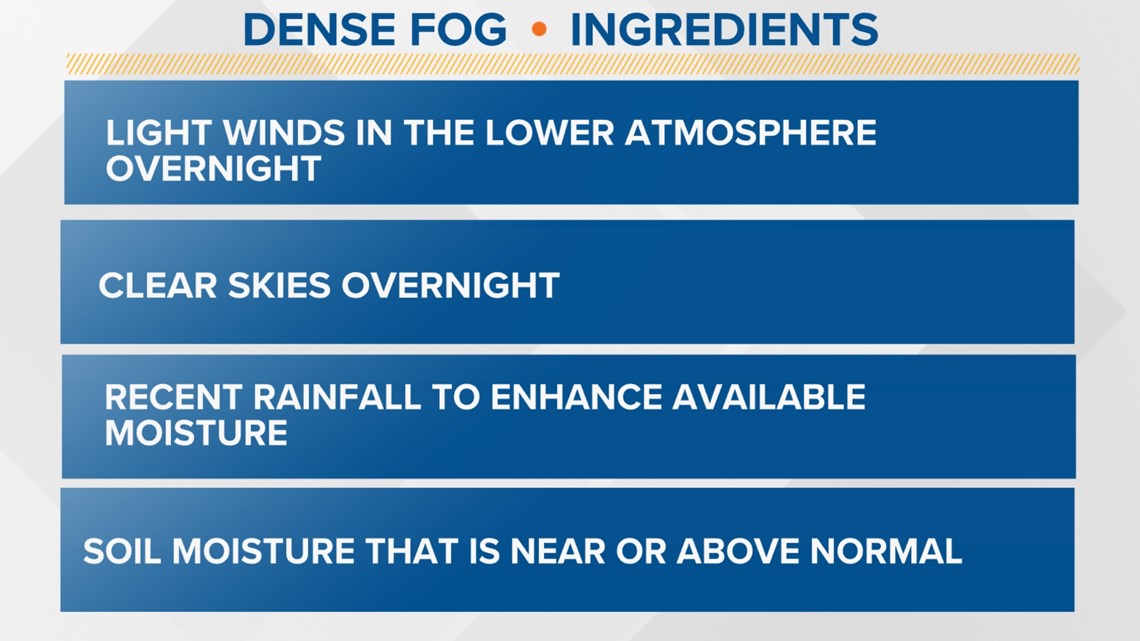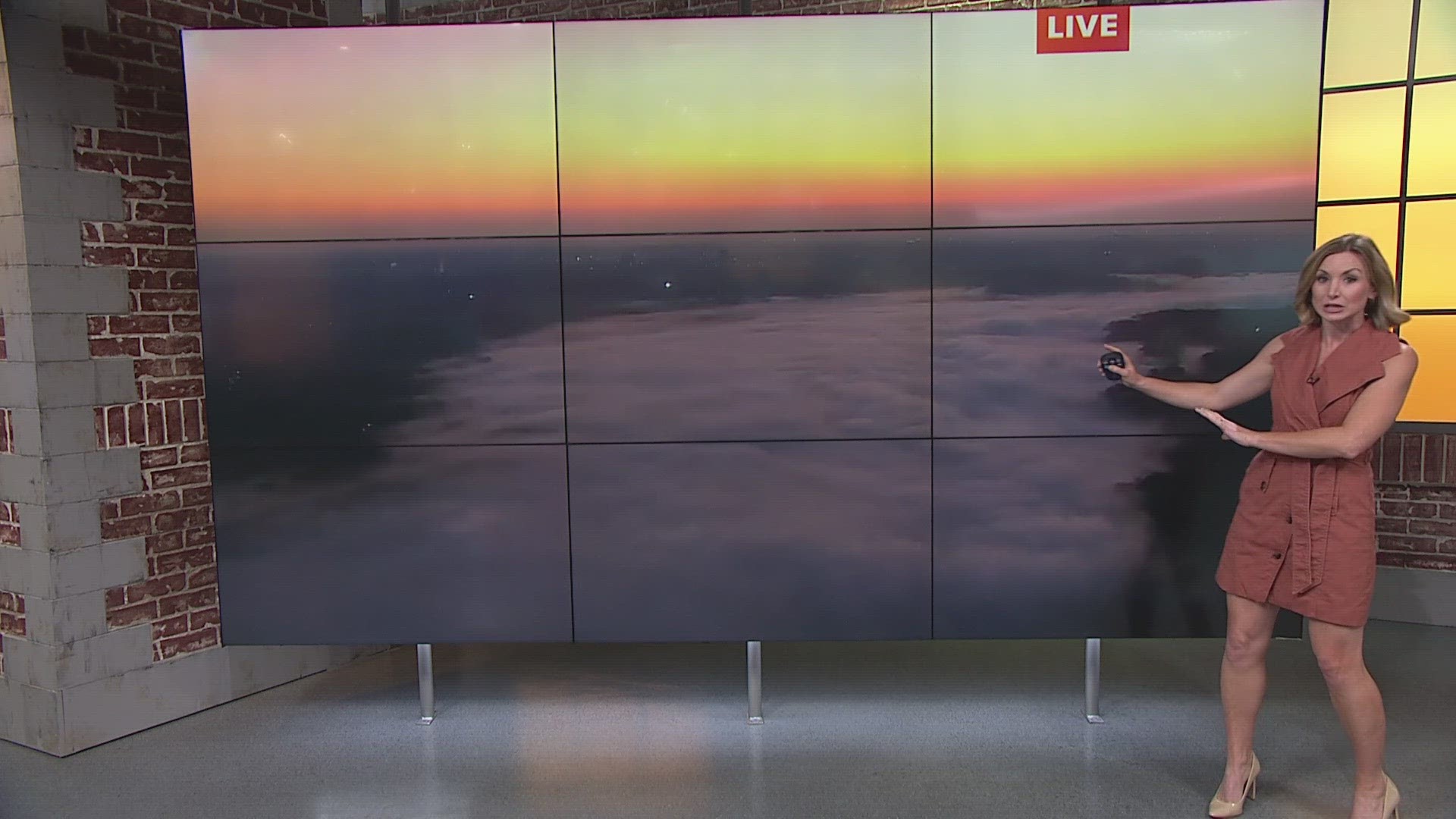WASHINGTON — Warmer daytime high temperatures paired with cooler fall nights is the perfect recipe for radiation fog.
When conditions are just right, heat absorbed by the earth's surface during the daytime is radiated back into space. When it runs into the cooler temperatures above the surface and that warm air cools below the dew point, the air becomes saturated and fog forms.
Fog tends to be more noticeable when we have really light winds and clear skies. It is typically most noticeable near bodies of water because there is more moisture available to evaporate and the temperature difference between water and air is much greater. For that same reason, we run the risk of widespread and dense fog after rain when the surface is more saturated.


Fog dissipates as the sun heats the ground and drier air mixes down into the fog helping the saturated air to evaporate. Fog tends to dissipate at the edges first, where it is more shallow, followed by the thicker center of fog.

